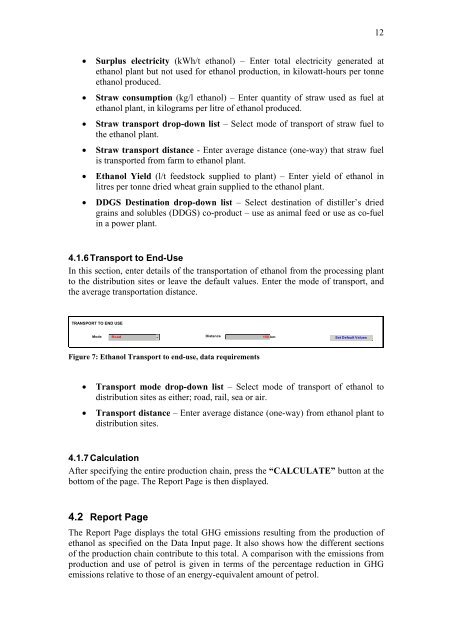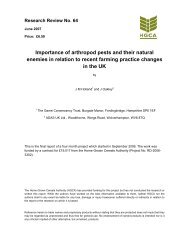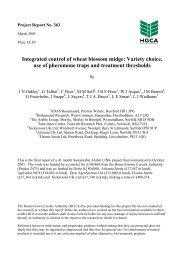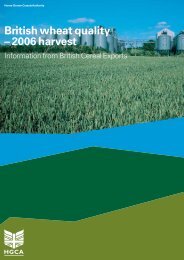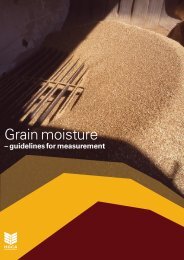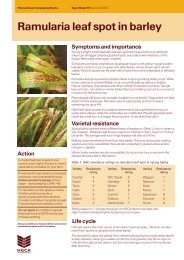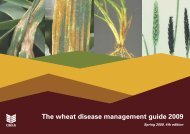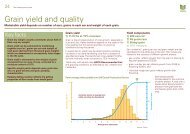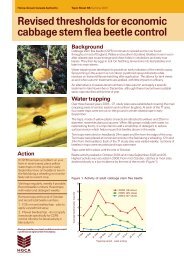BIOETHANOL GREENHOUSE GAS CALCULATOR - HGCA
BIOETHANOL GREENHOUSE GAS CALCULATOR - HGCA
BIOETHANOL GREENHOUSE GAS CALCULATOR - HGCA
Create successful ePaper yourself
Turn your PDF publications into a flip-book with our unique Google optimized e-Paper software.
12• Surplus electricity (kWh/t ethanol) – Enter total electricity generated atethanol plant but not used for ethanol production, in kilowatt-hours per tonneethanol produced.• Straw consumption (kg/l ethanol) – Enter quantity of straw used as fuel atethanol plant, in kilograms per litre of ethanol produced.• Straw transport drop-down list – Select mode of transport of straw fuel tothe ethanol plant.• Straw transport distance - Enter average distance (one-way) that straw fuelis transported from farm to ethanol plant.• Ethanol Yield (l/t feedstock supplied to plant) – Enter yield of ethanol inlitres per tonne dried wheat grain supplied to the ethanol plant.• DDGS Destination drop-down list – Select destination of distiller’s driedgrains and solubles (DDGS) co-product – use as animal feed or use as co-fuelin a power plant.4.1.6 Transport to End-UseIn this section, enter details of the transportation of ethanol from the processing plantto the distribution sites or leave the default values. Enter the mode of transport, andthe average transportation distance.TRANSPORT TO END USEModeRoadDistance150 kmSet Default ValuesFigure 7: Ethanol Transport to end-use, data requirements• Transport mode drop-down list – Select mode of transport of ethanol todistribution sites as either; road, rail, sea or air.• Transport distance – Enter average distance (one-way) from ethanol plant todistribution sites.4.1.7 CalculationAfter specifying the entire production chain, press the “CALCULATE” button at thebottom of the page. The Report Page is then displayed.4.2 Report PageThe Report Page displays the total GHG emissions resulting from the production ofethanol as specified on the Data Input page. It also shows how the different sectionsof the production chain contribute to this total. A comparison with the emissions fromproduction and use of petrol is given in terms of the percentage reduction in GHGemissions relative to those of an energy-equivalent amount of petrol.


